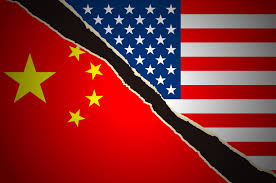
New Delhi: The attention of military planners in China is overwhelmingly directed towards the Pacific Ocean and there is a reason for their attention being divided between troop face-offs in Ladakh and three US aircraft carrier groups in the Pacific Ocean. The last time there were so many US super-carriers in the Pacific was three years ago because of North Korea. The US Indo-Pacific Command last month said all its forward-deployed submarines were at sea.
The US naval deployment, though not originally motivated by events along the Sino-Indian border, has inevitably become part of China’s larger strategic calculus.
The “movement of naval forces escalates things. Whenever you move them into an area of confrontation, it serves to send a message. The Chinese will worry about what the carriers can do, not what they necessarily will do,” says Vice-Admiral Anil Chopra, who just completed a term as the maritime expert on the National Security Advisory Board (NSAB).
While one carrier is off the US Pacific coast and another is near the Philippines, the USS Theodore Roosevelt has moved southwards to Vietnam. This location, says Mohan Malik, professor of strategic studies at the Pentagon’s Asia-Pacific Center for Security Studies, means that “in the event of a war, this carrier group would probably move to the Malacca Straits and the Bay of Bengal”.
The USS Roosevelt is a super-carrier, three times the size of an Indian or Chinese carrier, and its battle group would include accompanying cruisers, destroyer squadrons and submarines. “The US could deter the outbreak of a two-front war involving China and Pakistan on one side and India on other by dispatching an aircraft carrier battle group to the eastern Indian Ocean,” says Malik, if events were to spiral out of control.
Concerned China might consider an attack on Taiwan, Washington ordered all three of its active super-carriers, now virus free, and at least eight nuclear submarines into the Pacific. Beijing warned Washington to “stop moving chess pieces around” the region and “flexing its military muscles around China.”
US officials have privately told their Indian counterparts that one reason for their desire to leave Afghanistan is to divert the US$50 billion-a-year spends there to take on China.
The US military’s biggest concern is its “missile gap” against China. The US was banned from testing or deploying intermediate-range missiles (500 to 5,500 km range) globally because of a Soviet-era arms control treaty. Exploiting this lacuna, China has deployed over 2,000 long-range missiles along its shore.
The US has war gamed that, if forced to fight close to the Chinese shore, its military would be defeated. The Trump administration pulled out of the missile treaty last year and begun the rapid deployment of similar missiles along the Pacific. But Beijing knows it is secure against even a limited military engagement near the mainland for the next few years.
It is likely that this has emboldened China and contributes to the recent aggression it has shown to a variety of countries, the most recent being India.
“In the Cold War between China and America, India has emerged as a front-line state. China’s military pressure all along the disputed boundary is clearly aimed at the Finlandisation of India. Beijing wants to deny India a peaceful environment essential to realising its economic developmental goals that would narrow the power gap with China,” says Malik.








